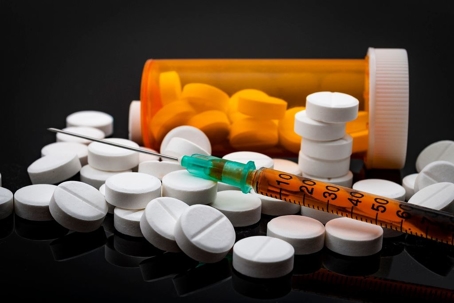Sonny Perdue, U.S. Secretary of Agriculture hosted a task force listening session in New Hampshire last September. The purpose of the task force, which included industry leaders, farm bureau members, local farmers, students, and state and local elected officials, was to talk about improving the quality of life for those in rural areas, and a large portion of the focus was devoted to talking about the opioid epidemic.
According to USDA.gov, each day in America, 90 people die as a result of an opioid overdose—that is a staggering three people every hour. While these deaths are certainly bad enough, the Centers for Disease Control and Prevention estimates the economic burden resulting from the misuse of prescription opioids in the U.S. is $78.5 billion a year. This figure includes treatment for addiction, lost work and productivity, and healthcare.
Opioid Addiction–Not Just a Big City Problem
While many of us may believe opioid addiction is a big city problem, in fact, the epidemic is even more intense in rural communities, due to limited employment opportunities and isolation. In fact, between the years 1999 and 2015, the death rates in rural areas due to opioids quadrupled among 18-25-year-olds. Even worse, in 2012, every 25 minutes a baby was born with opioid withdrawal symptoms. This means that even if every adult who is currently addicted to opioids were able to get clean, we would still have an entire generation born to mothers addicted to opioids to deal with—and nobody really knows at this point just what effects opioids in the womb will have on the health and future of these babies.
Opioid Addiction Crosses All Socio-Economic Boundaries
Perdue noted that “the opioid epidemic knows no boundaries. It has cut through communities of all sizes and families of all socio-economic backgrounds.” Perdue’s task force advocated for improved access to mental and behavioral care, including prevention, treatment, and recovery resources for those mired in the opioid crisis. The National Institute of Food and Agriculture awarded $2.8 million in grants last November to support rural health, and of the nine awards funded by NIFA, six addressed the prevention and abuse of opioids.
President Trump Declares the Opioid Crisis a National Emergency
President Trump stated his administration would declare opioids a national emergency; however, it is somewhat unclear just what such an emergency declaration will accomplish. Although opioid overdoses are perceived as a white, rural issue, in urban counties where the drug fentanyl has become more easily obtained, the death rate for opioid overdose has risen steeply among blacks between the ages of 45 and 64, according to the NY Times. The opioid crisis in America has caused the life expectancy for those in our nation to drop for the second year in a row—the first consecutive decline since 1963. Even more alarming, the opioid crisis has resulted in the leading cause of death for those under the age of 55 being drug overdoses, rather than heart disease.
Fentanyl Leads to Doubling of Drug Overdose Deaths in Washington D.C.
The drug fentanyl has led to the rate of drug deaths doubling in Washington D.C. in a single year, and drug overdose deaths have also had a steep uptick in Jacksonville, Philadelphia, St. Louis, and Baltimore. The co-director of opioid policy research at Brandeis University, Dr. Andrew Kolodny, says many of those who died of an opioid overdose were older black men who were addicted to heroin in the 1970s. After beating the heroin addiction, these men ended up overdosing on fentanyl or a drug with fentanyl in it. Often, fentanyl is sold as heroin on the street, resulting in a totally unintentional overdose. The cocaine supply in the U.S. is also often laced with fentanyl.
Nearly across the board, fentanyl has resulted in a huge spike in drug overdose deaths—about 16 percent of the overdose deaths in 2015 in New York, and a jump to 44 percent in 2016. The daily death toll from opioid overdoses has been likened to a 737 airplane crashing and killing all the passengers on board—every day. If left unchecked, by 2020, it is expected that the opioid crisis will have claimed over a million lives. How will this opioid crisis be solved—or is it even possible at this point?
Many believe that “cautious prescribing,” is the only way to prevent more people from becoming addicted. For those already addicted, effective outpatient treatment must become easier to access than prescription opioids, fentanyl, or heroin—currently, only one in 10 Americans who is addicted to opioids actually seek treatment. If every single opioid addict could be treated, the cost for that treatment could be as high as $100 billion—and some believe the drug manufacturers should bear that cost.
Lawsuits Filed Against Opioid Drug Manufacturers
The federal judge who is currently overseeing at least 200 lawsuits against opioid drug manufacturers wishes everyone would work together to curb the opioid epidemic rather than going through legal channels to solve the crisis, however since that is not likely to occur, opioid drug manufacturers are now defending their part in the opioid crisis. The opioid litigation started slowly, yet now more than 250 cities, counties, and states are suing opioid manufacturers, distributors, marketers, and wholesalers.
These companies claim all litigation should be halted until the FDA has conducted long-term studies regarding the risks and benefits of opioids. Yet Purdue Pharma, who many believe “jump-started” the opioid epidemic with their drug OxyContin, is now proposing a global settlement as a method of ending the current wave of litigation.
Some of the lawsuits claim opioid manufacturers “pushed highly addictive, dangerous opioids, falsely representing to doctors that patients would only rarely succumb to drug addiction.” Just recently, a number of cities in the state of West Virginia have also filed claims against the Joint Commission—an organization that certifies and accredits healthcare organizations and programs in the U.S. The allegations against the Joint Commission are that the organization spread “misinformation” to physicians regarding the risks of opioid addictions.
It remains to be seen whether the opioid crisis can be contained, or whether it is too far out of control to be managed. Perhaps the lawsuits against the opioid manufacturers and others will bring the level of awareness necessary regarding the crisis, and Americans will work together to solve the problem.
Contact Our Jackson Criminal Defense Lawyers
If you are arrested and charged with a drug crime in Jackson, Hattiesburg, Meridian, or anywhere in the State of Mississippi, you need to fight for your rights and protect your freedom. The best way to do this is to hire an experienced Jackson criminal defense attorney immediately.
At Coxwell & Associates, PLLC, our attorneys believe in fighting aggressively for our clients and we can build a defense that is designed to expose the holes in the prosecution’s case against you.
Contact Coxwell & Associates today at (601) 265-7766,or click on the button below.
Disclaimer: This blog is intended for general information purposes only, and is not a substitute for legal advice. Anyone with a legal problem should consult a lawyer immediately.

